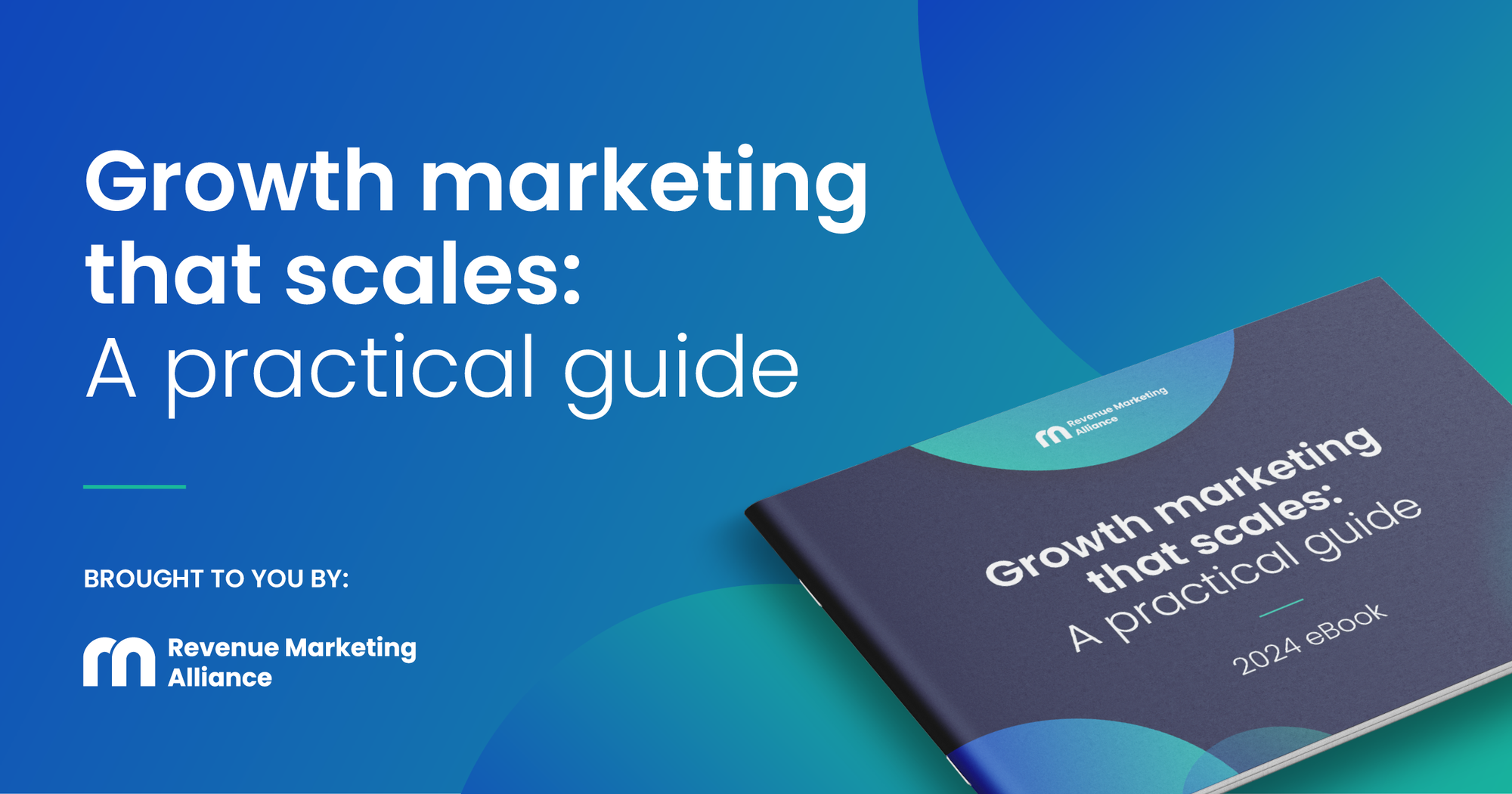This article originates from a panel discussion at the Revenue Marketing Summit in London. Catch up on this presentation, and others, using our OnDemand service. For more exclusive content, visit your membership dashboard.
Understanding and identifying your customers is paramount to success.
More than ever, customers expect personalized experiences, meaningful interactions, and solutions that cater to their unique needs. To meet these expectations, businesses need to deeply understand their customers and the wider market.
In this article, we explore the journey of understanding and identifying customers, uncovering key insights from industry experts across diverse domains.
Customer identification tactics: Assessing CLV
One of the most significant challenges in customer acquisition, especially in the business insurance sector, is the uncertainty surrounding the revenue generated by customers obtained through digital channels.
The diverse nature of businesses and their associated risks further complicates the matter, making a fixed cost per acquisition impractical.
To address this challenge, we’ve developed advanced machine learning models with predictive capabilities. One model forecasts the customer's value, while another predicts the tenure or duration of their engagement. Multiplying these predictions enables us to estimate a customer's lifetime value (CLV) based on their retention.
"We continuously feed data into [our machine learning] platform, leveraging it to optimize our efforts. While not an exact science, this approach provides us with a valuable directional indicator.
"We strive to extract maximum value from the small dataset we have. Each data point holds significant importance due to its scarcity and the associated costs of acquiring it."
This data-driven approach allows us to optimize our efforts continuously. While not an exact science, it provides a valuable directional indicator for channeling campaigns, targeting audiences, and crafting effective creative strategies. We leverage this platform to identify tactics that attract high-value customers, striking a balance between long-term considerations and short-term revenue.
In the B2B space, we face the challenge of working with "small data." With a limited amount of time, businesses spend in the market and the complexities of switching providers, our audience sizes are relatively small compared to the broader consumer market. Consequently, the accuracy of our models becomes crucial, relying on their sophistication and ability to learn from limited data.
To extract maximum value from our small datasets, we prioritize data accumulation. Each data point holds significant importance due to its scarcity and the associated costs of acquiring it. This challenge underscores the importance of making the most of the available information and continuously refining our models.
At Pleo, an expense management platform for companies, a similar data-driven approach is employed. The Pulsar platform enables them to gain insights and make predictions about the content and topics that resonate with their Ideal Customer Profile (ICP). This platform bridges the gap between general audience modeling and the actual content individuals engage with on platforms like Twitter, proving invaluable for their team.

Pleo has also intensified its community-focused initiatives, hosting events like CFO dinners. These gatherings serve as opportunities to understand the needs, challenges, and preferences of their target audience, enabling them to align their marketing efforts more effectively with the requirements of their customers.
Understanding the shift: B2B and B2C perspectives
In the current landscape, the boundaries between B2B and B2C are blurring. At Indeed, a recruitment industry leader, we’ve observed a heightened importance placed on the B2B to B2C transition.
Our unique role in assisting individuals in finding employment provides us with a wealth of data, allowing us to gain insights into various aspects such as purchase behavior, job application patterns, interests, and decision-making factors.
One significant shift we’ve noticed is the move toward a more business acumen-focused approach while still retaining a B2C orientation. Our objective is to bridge the gap between automation and personalized interactions, where artificial intelligence (AI) plays a central role in our operations. We strive to strike a balance between automated processes and maintaining a human touch, ensuring that our customers don't feel disconnected.

In the enterprise segment, we prioritize a personalized approach in all our endeavors. Rather than simply attempting to sell a product, we tailor our efforts to address the pain points and beliefs of our target audience.
We seek to understand what drives them to choose our platform and how we can support their goals and aspirations. Our approach revolves around providing solutions that align with their needs and values, rather than adopting a solely transactional mindset.
The pandemic has further accelerated this convergence between B2B and B2C. At heycar, a lead generation business in the automotive industry, we experienced this firsthand.
"The lockdowns have significantly accelerated the shift toward online car purchases. We observed a remarkable 500% uplift in intent since the post-pandemic period."
"It's essential to monitor and adapt to changes in customer behavior and trends. We’ve observed shifts in customer preferences and purchasing habits in our specific industry."
Navigating the shift: Adapting to a human-centered approach
In the B2B space, recognizing the human element is paramount. We target individuals within companies, some of whom operate as independent contractors or have small teams or apprenticeships. For these individuals, their businesses often encompass their entire lives, blurring the lines between personal and business finances.
Consequently, our communication strategy needs to cater to this varied audience. While certain content may be more relevant to larger enterprises, the majority of what we produce is developed with a human-centered approach, taking into account the specific needs and challenges that individuals face.
Rather than adopting an outdated, traditional B2B mindset that solely focuses on case studies and typical business-related content, we strive to address the unique requirements of individuals. We keep their needs at the forefront of our communication efforts, tailoring our messages accordingly.

As a modern tech company, we prioritize staying current and resonating with our audience on a human level. Our aim is to acknowledge their specific circumstances and deliver solutions that truly address their concerns. We embrace a more contemporary and human-centric approach, setting us apart from conventional B2B strategies of the past.
The pandemic has opened up new possibilities and highlighted the importance of work-life balance, prompting individuals to reflect on what truly makes them happy in terms of their work and overall life circumstances. This shift has brought about changes in how people apply for jobs and their expectations regarding work as a whole.
Moreover, the pandemic coincided with significant societal movements like Black Lives Matter, prompting individuals to seek out companies that take a stance on important social issues.
"People are increasingly passionate about aligning themselves with organizations that share their values and actively support the causes they care about. In fact, statistics suggest that around 64% of individuals lean toward belief-driven consumption."
Consequently, the human approach has become essential. Customers want to know what a company stands for, not only in terms of the products or services it offers but also in relation to its values and social impact.
They seek alignment between their own beliefs and the company's mission. This shift toward a more human-centered approach, where customers consider the larger picture beyond the transaction, has become a significant development in recent times.
Embracing the human-centered approach
The key to success in marketing lies in our ability to truly understand and connect with our customers on a human level, whether we operate in the B2B or B2C sphere.
This approach requires a deep dive into customer identification tactics, leveraging data-driven insights, predictive modeling, and community-focused initiatives to uncover the unique needs, challenges, and preferences of our target audiences.

Moreover, it demands a recognition of the blurring lines between B2B and B2C and an understanding of the profound shifts in customer behavior and values. When we adapt our strategies to cater to the individual; addressing their pain points, aligning with their beliefs, and fostering genuine connections, we can unlock the true potential of customer engagement, conversion, and retention.
In this era of personalization and belief-driven consumption, the human-centered approach is a necessity for any marketer seeking to thrive and succeed. Embracing this approach allows us to forge lasting relationships with our customers, transcending transactional boundaries and creating meaningful connections that drive sustainable growth and success.




 Follow us on LinkedIn
Follow us on LinkedIn



